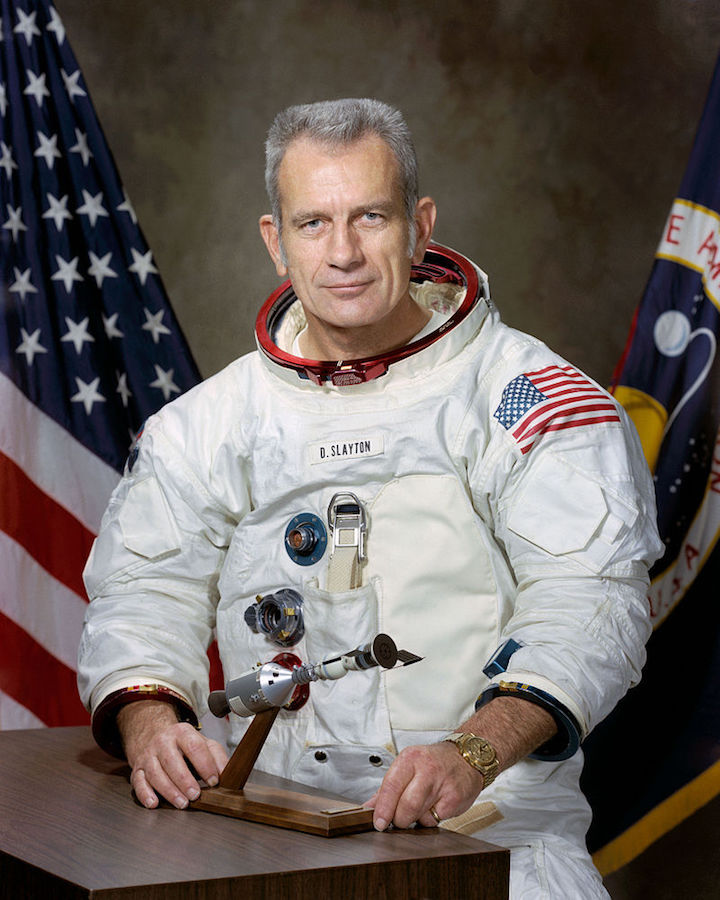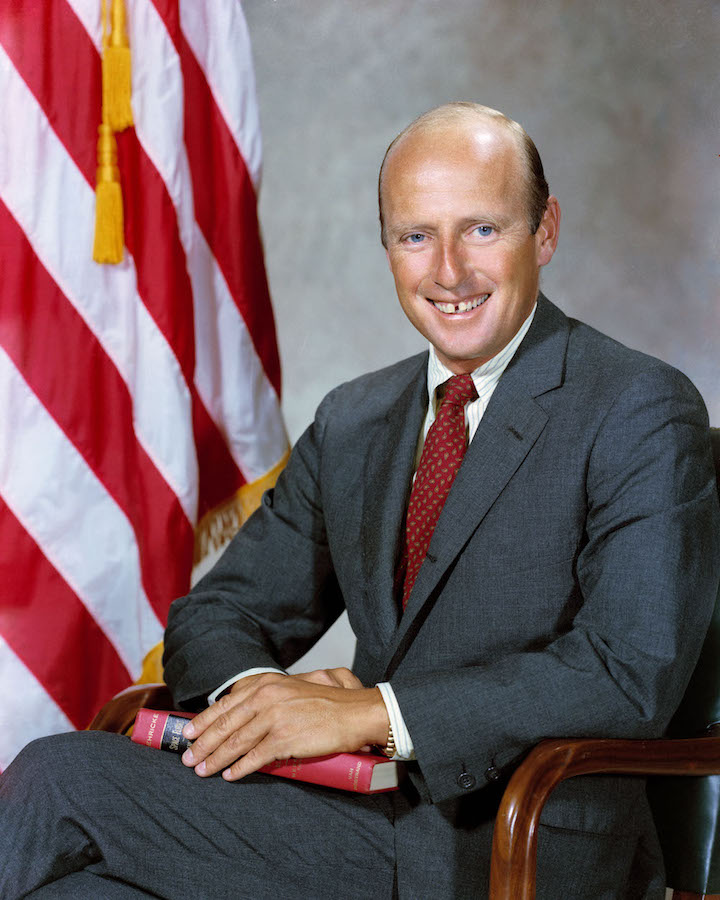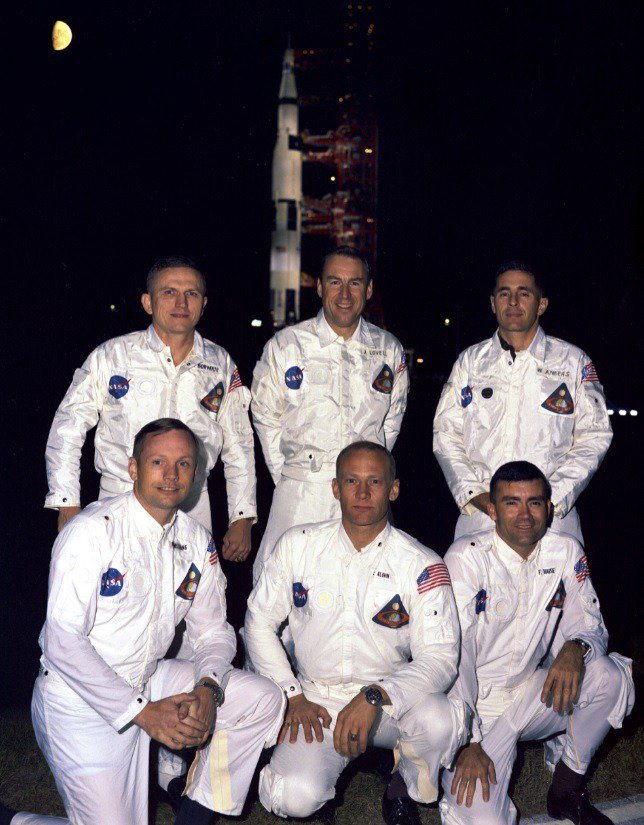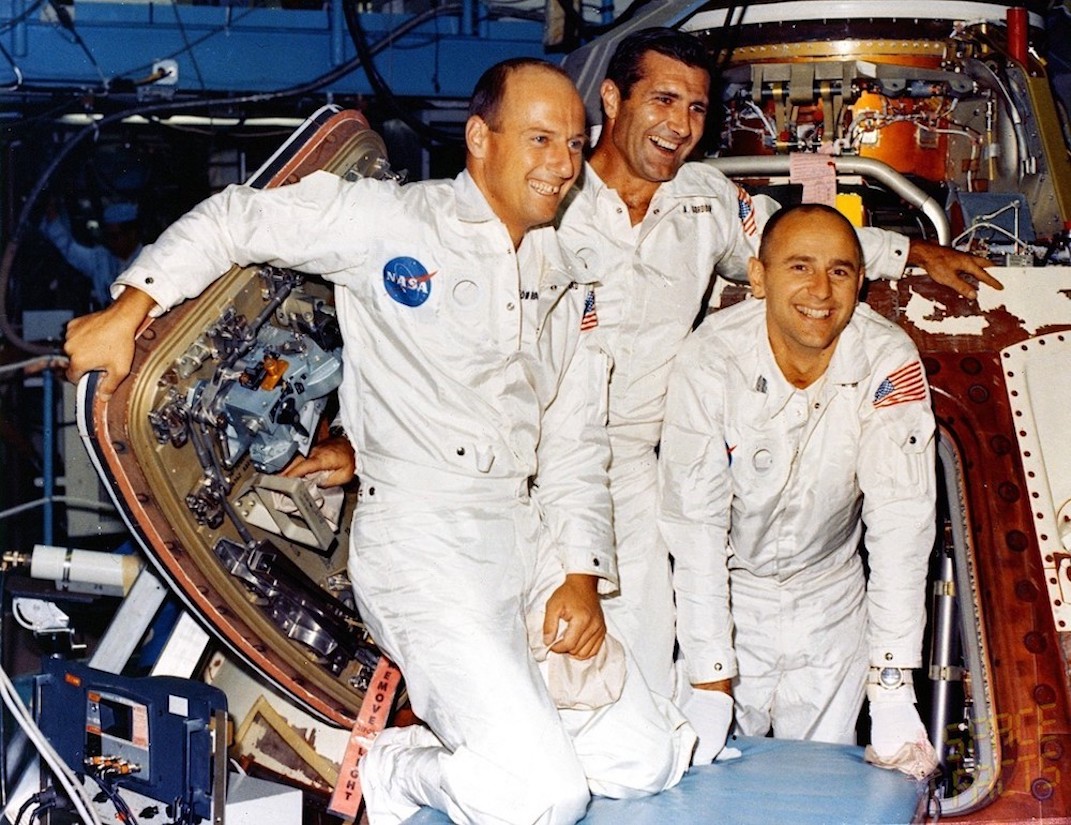
Figure 1: Neil Armstrong and his "one small step for a man, giant leap for mankind" on July 20th, 1969. Credit: NASA.
FIRST MAN ON THE MOON, HALF A CENTURY LATER
On July 20th, 1969, humans set foot upon the Moon for the first
time. This was the result of thousands of people working hard to
reach that specific goal on what it was called Project Apollo. The work of
everyone of them was necessary for that. Without it, what is
probably the greatest achievement in human history may have never
been a reality. All happened within an international political
context that provided enough motivation for those thousands of men
and women to join efforts in pursuit of what it was established as
a national goal. Nevertheless, the vast majority of those
contributors and enablers has just passed without due attention to
the rest of us. Only a very reduced minority of them has even had
the chance to appear on documentaries or written
articles. Astronauts were the most recognizable actors, the "tip
of the arrow", and even then, some of them were less prominent
than others. Obviously, the most famous of them all was the first
man to step on to the lunar surface: Mr. Neil Alden
Armstrong (Fig. 1).
Armstrong, as well as the other Apollo astronauts, was part of an
elite of fighter and test pilots. As such, he was used to
conducting very difficult missions and flying complex, never or
little before tested machines. Armstrong was also an aeronautical
engineer and a civilian when joined project Gemini in 1962. As an
engineer, his ultimate personal goal was that of achieving the
best possible design of an aircraft. As an experienced test pilot,
his ultimate personal goal being an Apollo astronaut was that of
executing a successful -perhaps the first- lunar landing. But he
never actually thought of being the first human to walk on
the surface of the Moon. That was simply not an interesting enough
achievement to him. He considered himself as just one more
astronaut and just one more person -among many, many others-
working hard to meet president Kennedy's deadline: to land a man
on the Moon before the end of the decade. In fact, all Apollo
astronauts were at the same level an equally qualified to perform
such a historic mission. Nevertheless, history, and particularly
events that were out of the reach of any mission planner at NASA
and even Armstrong himself, determined who the first man on the
Moon would be. Surprisingly enough, that was, in a way, induced by
the Soviet Union's space program itself.

Figure 2: Donald Kent "Deke" Slayton (1924-1993). Credit: NASA |

Figure 3: Neil Alden Armstrong (1930-2012). Credit: NASA |

Figure 4: Charles "Pete" Conrad Jr. (1930-1999). Credit: NASA |
After being grounded because of a heart condition, before having
even flown into space, Deke Slayton (Fig. 2), one of the Mercury 7
astronauts, became the chief of NASA's astronaut office. He
developed a methodology that, although not fully rigorous or
strict, allowed him to assign crews to specific missions. Apollo
mission crews were composed by three astronauts: commander (CDR),
command module pilot (CMP), and lunar module pilot (LMP). The most
senior astronaut would be the CDR, followed by the CMP, and then
by the LMP, the latter considered the "junior" astronaut. Every
mission would have a prime crew, destined to execute the mission
itself, a backup crew, intended to replace one or more of the
prime crew's members for the flight in case of need, and a support
crew, whose mission was that of ensuring that prime and backup
crews were always up-to-date on and informed of any changes to the
flight plan, checklists, and mission rules. Deke Slayton's general
rule for crew rotation was that every backup crew would be
considered to be prime crew three missions later. Slayton had to
be flexible of course to accommodate for astronauts' personal
decisions, temporal grounding (or even death) of an astronaut, and
also his personal choices for a specific mission or those of
NASA's management.
In the particular case of Armstrong (Fig. 3), he was part of the backup
crew of Gemini 5, becoming commander of Gemini 8, the third flight
after Gemini 5. Then he was again selected as a backup for Gemini
11. For Apollo, Slayton wanted an original Mercury astronaut to be
commander of the first Apollo mission. Since Alan Shepard was
grounded due to Ménière's Disease, Virgil Grissom
was chosen to command the AS-204 mission, later renamed Apollo
1. It was the 6th flight after Grissom served as backup commander
for Gemini 6A. Hence, the general rule for crew selection was not
followed when moving from Gemini to Apollo. In fact, the rule was
not always followed exactly during Gemini, although it was
relatively closely. Due to the Apollo 1 fire and the death of its
entire crew, mission crew assignments had to be reconsidered as
well. After being backup commander for Gemini 11, Armstrong was
assigned as backup commander for the second mission to test the
Command/Service Module (CSM) around Earth's orbit, Apollo 9. If
everything went well, Armstrong would thus most likely be
commander of the second moon landing attempt, the third flight
after Apollo 9. The first moon landing would then be the
responsibility of the backup crew of the Apollo 8 mission (first
manned test of the lunar module in Earth's orbit), commanded by
Pete Conrad (Fig. 4). Any delay in the program, requiring additional
preparatory missions before the first moon landing attempt, would
certainly require modifications to the flight and crew schedules,
pushing even further the first lunar descent mission.

Figure 5: Apollo 8 (originally Apollo 9) primary (top row) and backup (bottom row) crews. Primary crew, from left to right: Frank Borman, Jim Lovell, and Bill Anders. Backup crew, from left to right: Neil Armastrong, Buzz Aldrin, and Fred Haise. Credit: NASA |

Figure 6: Apollo 9 (originally Apollo 8) backup crew. From left to right: Pete Conrad, Dick Gordon, and Alan Bean. Later, they would become the prime crew of Apollo 12: second lunar landing. Credit: NASA |
Because nobody had ever before built a lunar module (LM), its
construction was running well behind schedule thus significantly
delaying the flight of Apollo 8. And here is when something
unexpected, and totally outside NASA, happened. A U.S. spy
satellite had photographed a giant Russian rocket on its launch
pad getting ready to fly. That rocket was the, at the time
unknown, N-1 moon rocket of the Soviets. Such an image could mean
only one thing: the Soviet Union was ready to send humans to the
Moon. If that N-1 rocket was launched and the first to reach the
Moon were the Soviets, then the whole space race was over. As a
desperate yet clever and very risky measure, to avoid the Russians
being the first to get to the Moon, NASA's George Low suggested to
replace the Apollo 9 mission for an entirely new one. This new
mission would still test the CSM but instead of doing it around
the Earth it would be flying it to the Moon and back! This would
require to fly for the first time with astronauts on board the
mighty Saturn V in an "all up" test, and, given the LM delays, its
flight would have to be before the original Apollo 8 mission. Deke
Slayton did not want to lose the experience of the different crews
acquired in training. Therefore, he swapped the Apollo 8 and 9
flights keeping their primary and backup crews unchanged (Fig. 5
and Fig. 6). Now the Apollo 8 mission would become Apollo 9 and
viceversa, and because of this change, Neil Armstrong, backup
commander of the new Apollo 8 flight (Fig. 5) to the Moon, was
very likely to be, following the general crew rotation rule,
commander of the first lunar landing attempt, Apollo 11. Apollo 8
orbited the Moon in December 1968, Apollo 9 successfully tested
the LM in Earth's orbit, and Apollo 10 did the same around the
Moon. The rest is history: Neil Alden Armstrong becomes the first
person to ever walk on the Moon on July 20th, 1969 (Fig. 1). Had
not the U.S. satellite spotted the N-1 rocket and the original
Apollo 8 and 9 mission swapped, a guy named Pete Conrad would have
been the first man to walk on the Moon. Conrad was the commander
of Apollo 12, the second successful lunar landing.
Therefore, it was just a matter of chance that Neil Armstrong
became the first one to walk on the Moon 50 years
ago. In fact, Armstrong could not apply to the first astronaut
call for project Mercury because it was opened to military test
pilots only, and Armstrong was a civilian test pilot working for
NASA at that time. When the call for a second group of NASA
astronauts for project Gemini was issued, opened also to
civilians, Armstrong's application arrived about one week passed
the deadline. It was thanks to the help of someone working for
NASA's Manned Spacecraft Center, who knew Armstrong, recognized
his application and secretly slipped it into the pile of on-time
applications, that Armstrong's form reached Slayton's
desk. Without that help, Armstrong might have never been accepted
into the space program. Years later, Armstrong got close of being
killed in two opportunities. The first one during the Gemini 8
mission when his spacecraft entered an extreme roll in orbit
around the Earth. The second one, while flying the Lunar Landing
Training Vehicle, having to eject himself only seconds before
crashing. Had any of the above events gone wrong, who knows who
might have been the first man on the Moon.
Final remark: Contrary to what had been the tradition during the Gemini
program -that the EVA was not conducted by the commander of the
flight-, it was NASA's management [by Chris Kraft in fact]
decision that for the EVA on the moon the commander would exit
the spacecraft first. Had the Gemini procedure been maintained,
Armstrong would have been the second on the lunar surface.
References:
"An Audience
with Neil Armstrong", Interview by CPA Australia's Alex Malley (2011)
"How Luck Made Neil Armstrong the First Man on the Moon" by Amy
Shira Teitel, Discover Magazine (January 2019)
"50
Years Ago: Soviet’s Moon Rocket’s Rollout to Pad Affects Apollo
Plans" by Mark Garcia (Editor), NASA Apollo (November 2017)
"50
Years Ago: Armstrong Survives Training Crash" by Melanie Whiting
(Editor), NASA History (May 2018)
Neil
Armstrong, from Wikipedia, and references therein
"Day Leaves Behind a Rich Legacy" by
Sarah Merlin, Dryden Flight Research Center, NASA (News, Vol. 46, Issue
6, July 2004)
-April, 2019. (Last revised: July 2020.)


